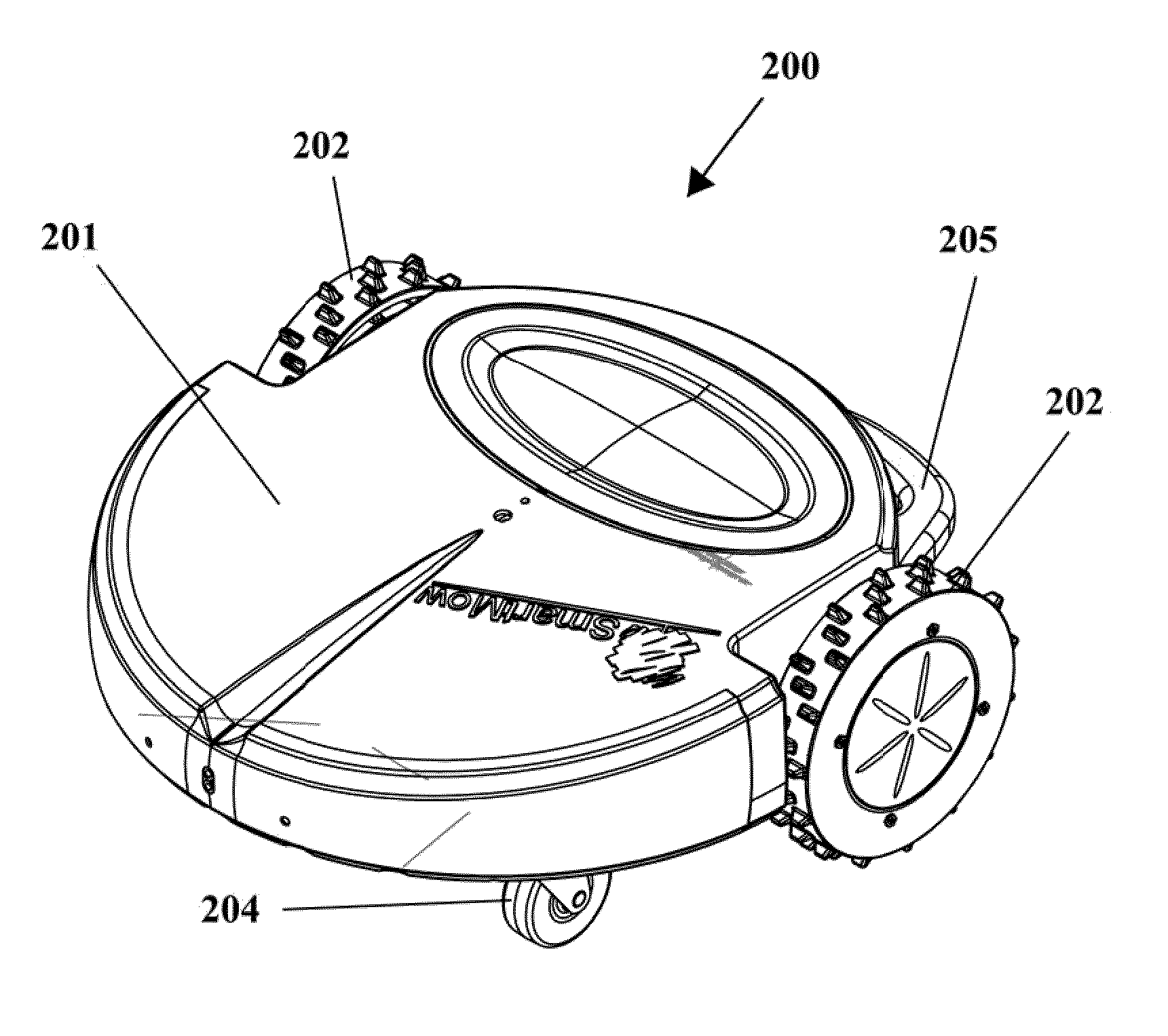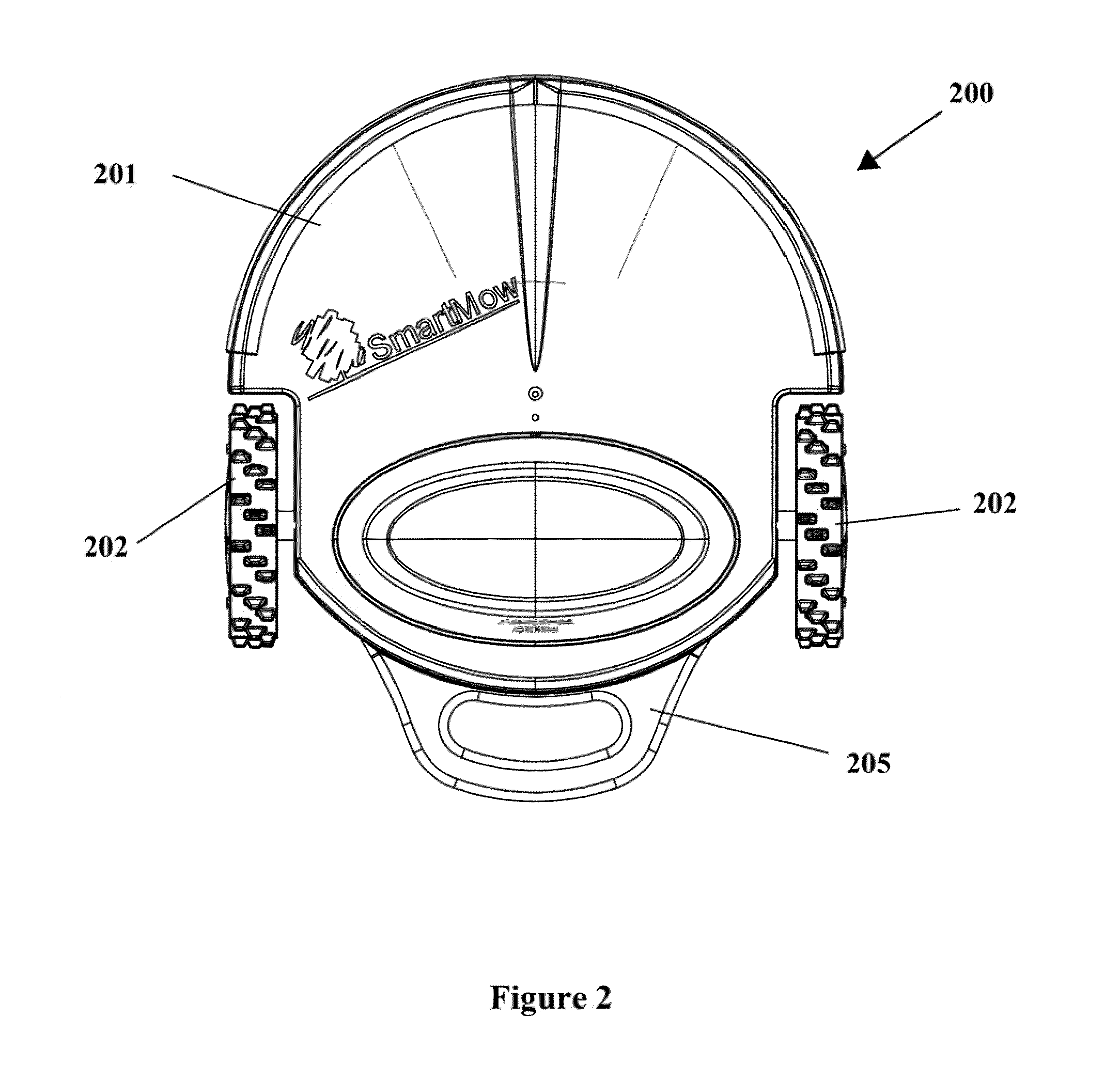Method for establishing a desired area of confinement for an autonomous robot and autonomous robot implementing a control system for executing the same
a technology of autonomous robots and control systems, applied in the field of autonomous robots, can solve the problems of unnecessarily complex commercially successful robots, damaged robots, and injury to unsuspecting peopl
- Summary
- Abstract
- Description
- Claims
- Application Information
AI Technical Summary
Benefits of technology
Problems solved by technology
Method used
Image
Examples
Embodiment Construction
[0027]Referring first to FIGS. 1-7 concurrently, an autonomous robot 200 designed for mowing a lawn is illustrated according to one embodiment of the present invention. While the invention will be described in terms of an autonomous robot designed for mowing a lawn, it is to be understood that the control system and methods described herein can be implemented into any type of autonomous machine that must perform a desired activity within a desired area of confinement, including without limitation cleaning machines, polishing machines, repair machines, and / or demolition machines.
[0028]The autonomous robot 200 generally comprises a main housing 201, a pair of drive wheels 202, grass cutting blades 203 and steering wheels 204. A handle 205 is provided on the rear end of the housing 201 for convenience of handling and / or user-initiated movement. Three cutting blades 203 are provided. However, more or less blades 203 can be implemented.
[0029]Referring briefly to FIG. 13, the housing 201 ...
PUM
 Login to View More
Login to View More Abstract
Description
Claims
Application Information
 Login to View More
Login to View More - R&D
- Intellectual Property
- Life Sciences
- Materials
- Tech Scout
- Unparalleled Data Quality
- Higher Quality Content
- 60% Fewer Hallucinations
Browse by: Latest US Patents, China's latest patents, Technical Efficacy Thesaurus, Application Domain, Technology Topic, Popular Technical Reports.
© 2025 PatSnap. All rights reserved.Legal|Privacy policy|Modern Slavery Act Transparency Statement|Sitemap|About US| Contact US: help@patsnap.com



